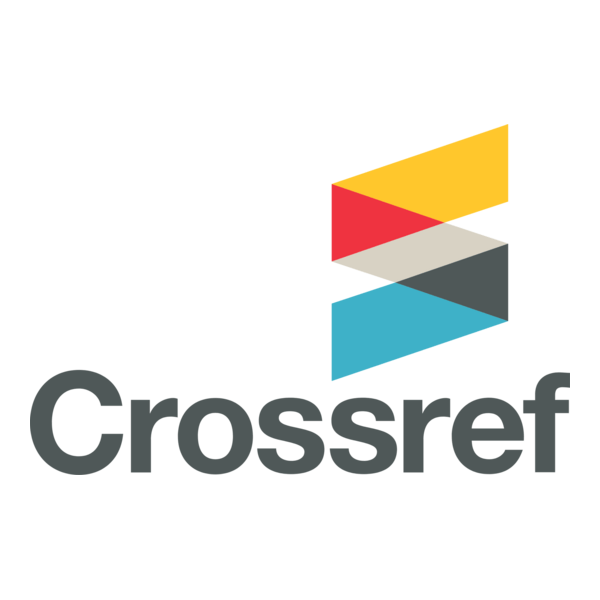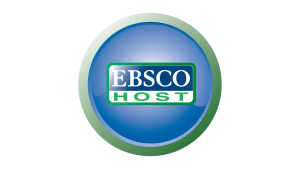Predpisi o trženju hrane in debelost otrok v Ameriki
Analiza učinkov trženja hrane na debelost pri otrocih ter (ne)učinkovitosti zakonov in regulativnih ukrepov na področju trženja hrane v Združenih državah Amerike in Braziliji v primerjavi s Čilom
DOI:
https://doi.org/10.37886/ip.2024.005Ključne besede:
usmerjeno v otroke, prehrana, internetno pravo, trženje, predpisi, oglaševanje živil, debelost otrok, označevanje živil, primerjalno pravoPovzetek
Raziskovalno vprašanje (RQ): Kakšen je vpliv trženja in oglaševanja hrane na debelost pri otrocih?
Namen: Namen te raziskave je analizirati obstoječe regulativne ukrepe in zakonodajo o trženju živil, namenjenih otrokom, razumeti njegove učinke in poiskati načine za zmanjšanje debelosti pri otrocih.
Metoda: V tej študiji je uporabljen primerjalni pristop k analizi veljavne zakonodaje in regulativnih ukrepov o trženju živil, uveljavljenih v Braziliji, Čilu in Združenih državah Amerike. Prav tako se je posvetovala s številnimi strokovnimi članki in znanstvenimi študijami o vplivu trženja in oglaševanja živil na debelost pri otrocih. Ta raziskava tudi kaže na učinkovitost ustrezne ureditve trženja in oglaševanja hrane, usmerjene v otroke, pri zmanjševanju uživanja ultra predelane hrane pri otrocih, kar bo posledično privedlo do zmanjšanja debelosti pri otrocih.
Rezultati: Predpisi, kakršni se izvajajo v Čilu, so se izkazali za učinkovite pri omejevanju izpostavljenosti otrok prepričljivemu in manipulativnemu trženju hrane. Posledično povzročajo znatno zmanjšanje porabe takšnih živilskih izdelkov pri otrocih, kar lahko privede do zmanjšanja debelosti pri otrocih.
Organizacija: Ta raziskava lahko pomaga vladam in organizacijam pri iskanju učinkovitih ukrepov za oblikovanje, izboljšanje ter uveljavljanje zakonodaje in predpisov o trženju živil, usmerjenih v otroke.
Družba: Ljudje so dovzetni za vpliv in manipulacijo prepričljivih tržnih strategij. Tako so otroci, ki so lažje vplivni del prebivalstva, še bolj ranljivi za takšne taktike. Ta raziskovalna naloga pomaga dodatno prikazati to dejstvo in nevarnosti, ki jih predstavljajo te tržne strategije, ter predlaga možnosti za preprečevanje vpliva omenjenih škodljivih taktik.
Originalnost: Za razliko od večine drugih tovrstnih raziskav ta prinaša primerjalni pristop pri analizi učinkovitosti predpisov v latinskoameriških državah in Združenih državah Amerike, ko gre za trženje ultra predelanih živilskih izdelkov, namenjenih otrokom.
Omejitve / nadaljnje raziskave: Omejitve, s katerimi smo se soočili, so bile pomanjkanje primarnih raziskovalnih virov in pomanjkanje poglobljenih raziskovalnih virov na to specifično temo. Nadaljnja raziskava bi lahko razširila obravnavane države na druge latinskoameriške države ter evropske in bližnjevzhodne države.
Literatura
Black, J. D. (2013, July 18). 7 questions about smart snacks in school standards. The Pew Charitable Trusts. https://www.pewtrusts.org/en/research-and-analysis/articles/2013/07/18/7-questions-about-smart-snacks-in-school-standards
Branding. (2022). In Cambridge Dictionary. Retrieved September 4, 2022, from https://dictionary.cambridge.org/dictionary/english/branding
Constitution of the Federal Republic of Brazil (Brazil, 1988). https://www.stf.jus.br/arquivo/cms/legislacaoConstituicao/anexo/brazil_federal_constitution.pdf
Código De Defesa Do Consumidor. (Brazil, 1990). https://www.planalto.gov.br/ccivil_03/leis/l8078compilado.htm
Instrução Normativa - IN Nº 75/2020. ANVISA - Agência Nacional de Vigilância Sanitária (Brazil, 2020, October 8). https://antigo.anvisa.gov.br/legislacao#/visualizar/434474.
Lei Nº 11.346/2006. (Brazil, 2006). https://www.planalto.gov.br/ccivil_03/_ato2004-2006/2006/lei/l11346.htm
Resolução CONANDA Nº 163/2014, de 13 de Março de 2014. (Brazil, 2014, March 13). https://site.mppr.mp.br/crianca/Pagina/Resolucao-CONANDA-no-1632014-de-13-de-marco-de-2014
Resolução Da Diretoria Colegiada - RDC Nº 429/2020. ANVISA - Agência Nacional De Vigilância Sanitária. (Brazil, 2020, October 8). https://antigo.anvisa.gov.br/legislacao#/visualizar/434473
Superior Tribunal de Justiça. (2017, May 1). Campanha Da Sadia é Considerada Abusiva Por Incentivar Consumo De Alimentos Calóricos Pelas Crianças. https://www.stj.jus.br/sites/portalp/Paginas/Comunicacao/Noticias-antigas/2017/2017-05-01_08-14_Campanha-da-Sadia-e-considerada-abusiva-por-incentivar-consumo-de-alimentos-caloricos-pelas-criancas.aspx
Cantu-Pawlik, S. (2018, October 17). The state of policy on junk food and drink marketing to kids. Salud America. https://salud-america.org/the-state-of-junk-food-and-drink-marketing-to-kids/
Nutrition, C. F. F. S. a. A. (n.d.). Food Labeling & Nutrition. U.S. Food And Drug Administration. Retrieved September 7, 2022, from https://www.fda.gov/food/food-labeling-nutrition
Cezar, A. (2008). The Effects of Television Food Advertising on Childhood Obesity. Nevada Journal of Public Health, 5(1), Article 2. https://digitalscholarship.unlv.edu/njph/vol5/iss1/2/?utm_source=digitalscholarship.unlv.edu%2Fnjph%2Fvol5%2Fiss1%2F2&utm_medium=PDF&utm_campaign=PDFCoverPages
Ley 20606 | Sobre Composición Nutricional De Los Alimentos y Su Publicidad. (Chile, 2021, August 18) www.bcn.cl/leychile. https://www.bcn.cl/leychile/navegar?idNorma=1041570&idVersion=2021-08-18&idParte=
Ley de etiquetado de alimentos. (2019, July 2). Portal Chile Atiende. Retrieved September 10, 2022, from https://test.chileatiende.cl/fichas/40557/1/pdf
UNC Gillings School of Global Public Health. (2021, September 1). Chile’s Law of Food Labeling and Advertising encourages notably healthier choices - UNC Gillings School of Global Public Health. https://sph.unc.edu/sph-news/chiles-law-of-food-labeling-and-advertising-encourages-notably-healthier-choices/
Connor, S. M. (2006). Food-Related Advertising on Preschool Television: Building brand recognition in young viewers. Pediatrics, 118(4), 1478–1485. https://doi.org/10.1542/peds.2005-2837
Dixon, H., Scully, M., Wakefield, M., White, V., & Crawford, D. (2007). The effects of television advertisements for junk food versus nutritious food on children’s food attitudes and preferences. Social Science & Medicine, 65(7), 1311–1323. https://doi.org/10.1016/j.socscimed.2007.05.011
UNC Global Food Research Program. (2020, September). Front-of-Package (FOP) Food Labelling: Empowering Consumers to Make Healthy Choices. University of North Carolina at Chapel Hill. Retrieved September 8, 2022, from https://globalfoodresearchprogram.org/wp-content/uploads/2020/08/FOP_Factsheet_UNCGFRP_2020_September_Final.pdf
Front-of-package labeling. (n.d.). PAHO/WHO | Pan American Health Organization. https://www.paho.org/en/topics/front-package-labeling#:~:text=One%20of%20the%20key%20policy,%2C%20trans%20fats%2C%20and%20sodium
American Psychological Association. (2010, November 17). The impact of food advertising on childhood obesity. https://www.apa.org. https://www.apa.org/topics/obesity/food-advertising-children
Joelving, F. (2011, June 27). Ban fast food ads on TV: U.S. doctors. Reuters. Retrieved September 6, 2022, from https://www.reuters.com/article/us-fastfood-ads-idUSTRE75Q0K820110627/
Mhurchú, C. N., Eyles, H., & Choi, Y. (2017). Effects of a voluntary Front-of-Pack nutrition labelling system on packaged food reformulation: The Health Star Rating System in New Zealand. Nutrients, 9(8), 918. https://doi.org/10.3390/nu9080918
World Health Organization: WHO. (2021, June 9). Obesity and overweight. https://www.who.int/news-room/fact-sheets/detail/obesity-and-overweight
Plan of Action for the Prevention of Obesity in Children and Adolescents. (2015, January 29). PAHO/WHO | Pan American Health Organization. Retrieved September 4, 2022, from https://www.paho.org/en/documents/plan-action-prevention-obesity-children-and-adolescents
Regulation of Advertising and Labeling: Conditions of Private Information Supply. (n.d.) Economic Research Service-USDA. Retrieved September 6, 2022, from https://www.ers.usda.gov/webdocs/publications/41905/51665_ah715c.pdf?v=0.
The role of media in childhood obesity. (2004, February 1). https://search.issuelab.org/resource/the-role-of-media-in-childhood-obesity.html
Tools for schools: Focusing on smart Snacks | Food and Nutrition Service. (2013, October 31). Retrieved September 8, 2022, from https://www.fns.usda.gov/cn/smart-snacks-school
United States Department of Agriculture. (n.d.). Smart Snacks in School. Retrieved September 8, 2022, from https://fns-prod.azureedge.us/sites/default/files/allfoods_infographic.pdf
Andrew Seidman, Washington Bureau. (2011, July 9). Food, advertising industries call voluntary guidelines unreasonable - Los Angeles Times. Los Angeles Times. Retrieved September 5, 2022, from https://www.latimes.com/health/la-xpm-2011-jul-09-sc-dc-0708-food-children-20110709-story.html
Simões, A. C. A., & Sales, M. V. L. (2019). Rotulagem Nutricional Frontal No Brasil: Um Diálogo Atual Entre o Dever De Rotulagem e a Promoção Dos Direitos Dos Consumidores In F. D. M. Soares), Elaboração Legislativa Em Direito Agroalimentar (pp. p. 106–142) Editora Tribo Da Ilha. https://observalei.direito.ufmg.br/wp-content/uploads/2021/02/ELABORACAO-LEGISLATIVA-EM-DIREITO-AGROALIMENTAR.pdf.
Taillie, L. S., Bercholz, M., Popkin, B. M., Reyes, M., Colchero, M. A., & Corvalán, C. (2021). Changes in food purchases after the Chilean policies on food labelling, marketing, and sales in schools: a before and after study. The Lancet Planetary Health, 5(8), e526–e533. https://doi.org/10.1016/s2542-5196(21)00172-8
Thompson, S. (2016, October 26). Fast-Food advertising restrictions in America. Small Business - Chron.com. Retrieved September 9, 2022, from https://smallbusiness.chron.com/fastfood-advertising-restrictions-america-66101.html
Thompson, V. (2016, October 26). Laws regarding false advertising of fast food. Small Business - Chron.com. Retrieved September 9, 2022, from https://smallbusiness.chron.com/laws-regarding-false-advertising-fast-food-58515.html
Dodatne datoteke
Objavljeno
Kako citirati
Številka
Rubrike
Licenca
Avtorske pravice (c) 2024 Brigida Cury Gomes Carneiro, Isabelly Camparim Brandão Ferraz

To delo je licencirano pod Creative Commons Priznanje avtorstva-Deljenje pod enakimi 4.0 mednarodno licenco.
![]()








